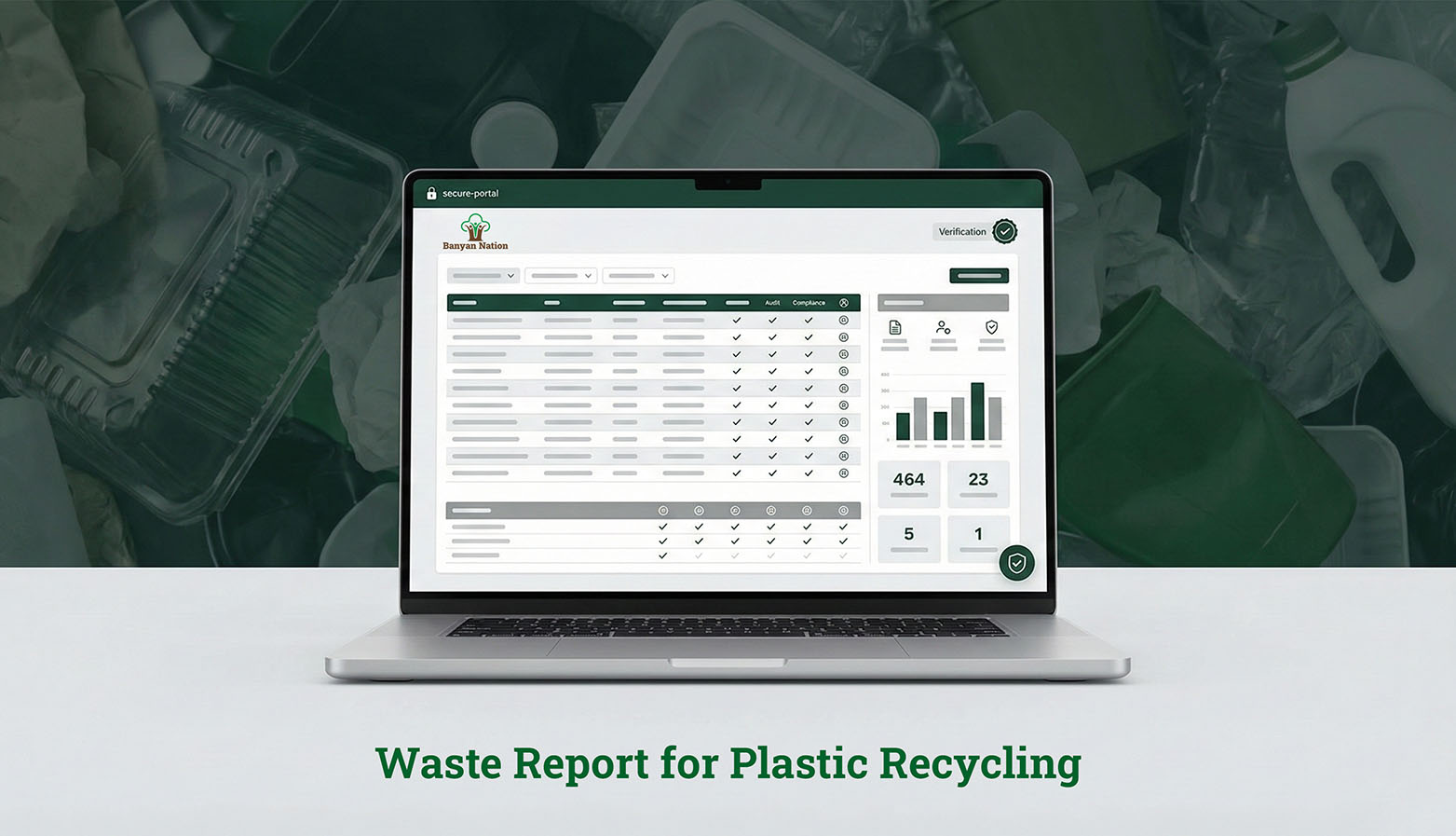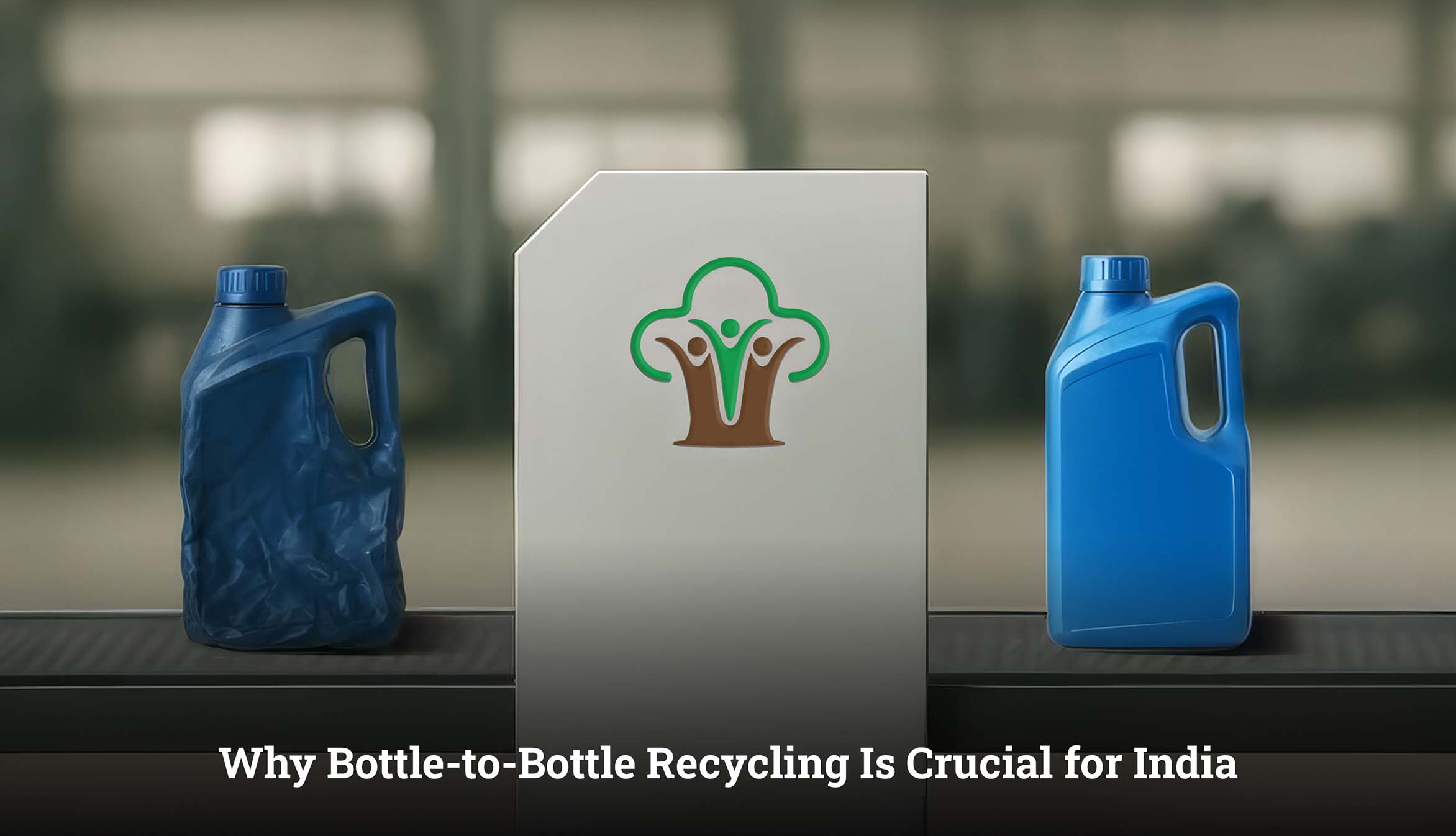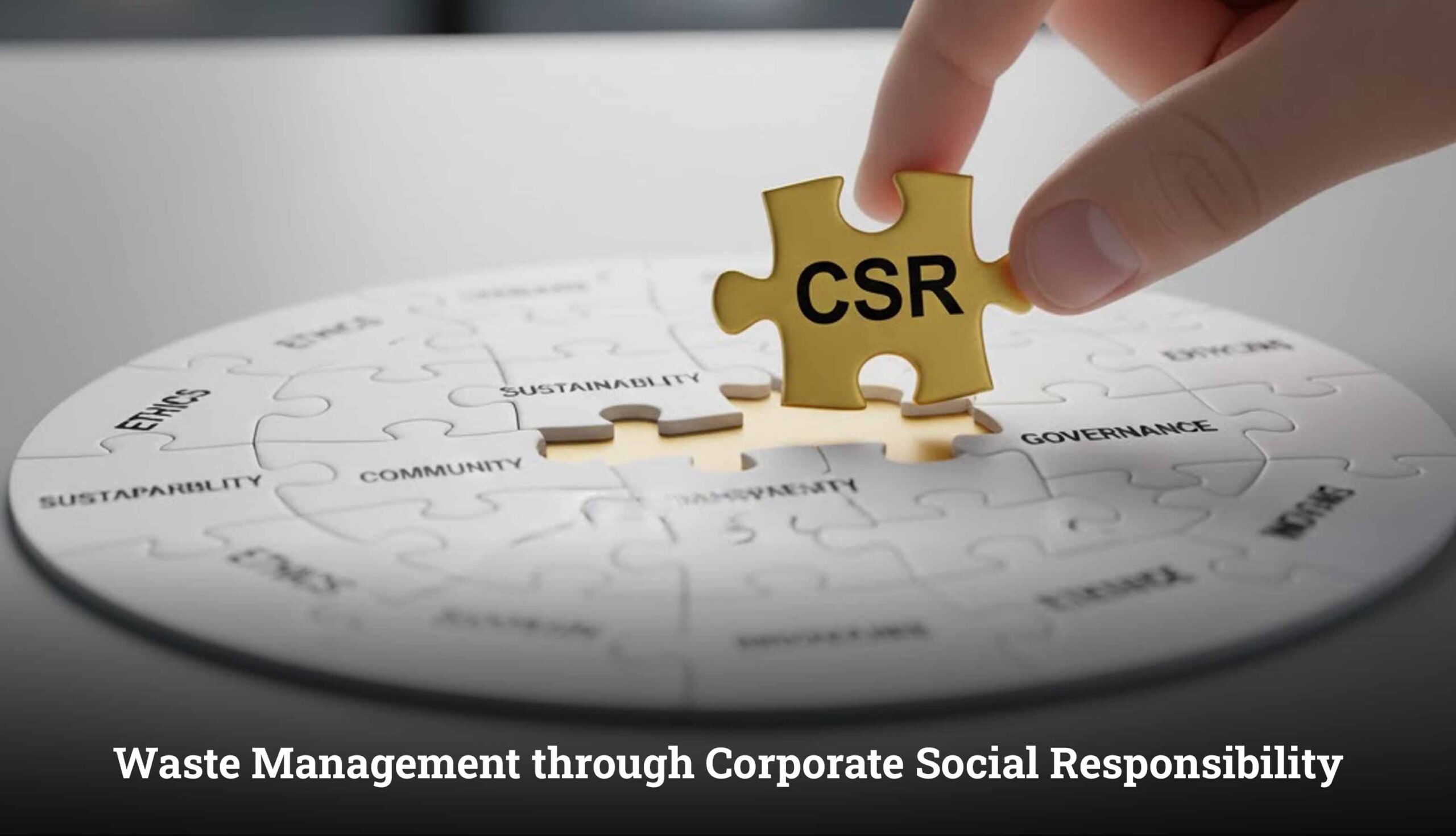Introduction
Post-consumer recyclable (PCR) plastics are changing how companies handle waste and think about being more eco-friendly. With everyone caring more about the environment these days, businesses feel real pressure to stop relying so much on brand-new plastic and start using materials that have been recycled from consumer products. PCR plastics come from the plastic stuff we use every day—water bottles, food packaging, and storage containers—that people have finished using. After collection, these materials get cleaned up, sorted out, and put through specialized recycling methods to become useful raw materials once more.
PCR plastic basically creates a circle where waste gets a second chance at life, cutting down on our need for fossil fuels and shrinking our environmental impact. As the world pushes for better manufacturing practices and circular economy approaches, PCR recycled plastic has become both essential and promising for companies wanting greener alternatives. Banyan Nation, India’s top company for smart plastic recycling, helps big corporations use high-quality, trackable post-consumer recycled plastic on a large scale. By building PCR plastic recycling into how products get designed and made, they’re creating real positive change for environmental goals and helping build a cleaner, more sustainable future.
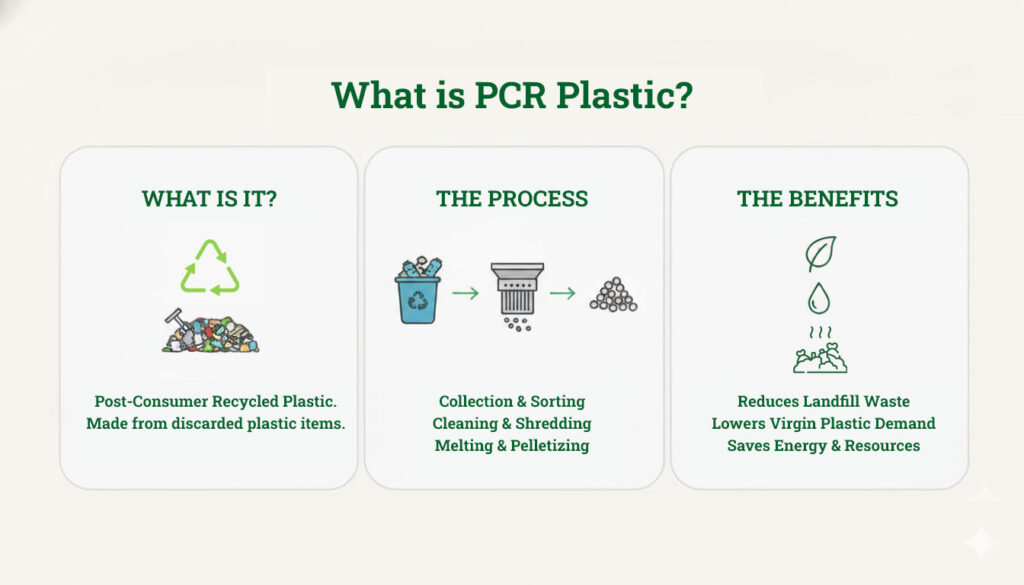
What Exactly is PCR Plastic?
To really get what PCR plastic means, you need to look at how it lives its life. PCR plastic (Post-Consumer Recycled Plastic) comes from materials collected after people have used them—stuff like soda bottles, cleaning product containers, or hair care bottles—which then get processed and turned into fresh plastic products.
PCR post-consumer recycled plastic works differently from pre-consumer recycled materials, which come from factory leftovers or scraps. The important thing is that PCR plastic has already been through the whole consumer experience, making it a real example of circular reuse.
You’ll commonly see:
– Beverage and water bottles turned back into new bottles
– Plastic containers given new life as packaging
– Top-quality recycled PCR materials used in car parts
This makes PCR plastics a green alternative to brand-new resin while keeping similar quality for most uses.
How Do We Make PCR Plastic?
Turning recycled post-consumer materials into useful PCR plastic takes several careful and controlled stages. PCR recycling process focus on keeping the plastic quality high while making sure everything stays clean and safe.
Here’s typically how it goes:
- Collection – post-consumer recyclable materials get picked up from waste sources like homes, recycling facilities, and collection events.
- Sorting – Plastics get separated by type and colour using machines or AI-powered systems.
- Cleaning – Things like labels, leftover residue, or food bits get removed.
- Shredding – Clean plastics get chopped up into flakes, creating the foundation of recycled PCR resin.
- Extrusion and Pelletizing – The flakes get melted down, pushed through machines, and shaped into uniform pellets—ready to use in manufacturing.
Every step of PCR plastic recycling makes sure there’s barely any loss in strength, making PCR recycled plastic perform just as well as brand-new resins.
What Makes PCR Plastic Great?
Post-consumer recycled plastic brings amazing benefits for both manufacturers and our planet. PCR plastics help reduce waste, save resources, and cut down on environmental damage.
Main benefits include:
- Less Environmental Damage: PCR recycling dramatically cuts greenhouse gas emissions by reducing our dependence on new plastic.
- Smart Resource Use: By using recycled post-consumer waste, companies save fossil resources and energy.
- Brand Eco-Friendliness: Lots of global brands now choose PCR post-consumer recycled plastic to hit their green targets.
- Meeting Rules: Using PCR recycled plastic helps companies follow Extended Producer Responsibility (EPR) requirements.
- Circular Economy: Promotes smart consumption and turning waste into resources.
PCR plastic meaning goes way beyond just recycling—it’s about changing how materials move through our economy.
Different Types of PCR Plastics
Several varieties of PCR plastic exist, chosen based on what they’re used for, their physical characteristics, and how well they can be recycled. Knowing the different types of PCR plastic helps designers and manufacturers pick the right material for eco-friendly production.
The most popular types are:
- PCR PET (Polyethylene Terephthalate): Shows up in drink bottles, packaging films, and containers.
- PCR HDPE (High-Density Polyethylene): Found in personal care and household product packaging.
- PCR PP (Polypropylene): Often seen in bottle caps, car parts, and molded containers.
- PCR LDPE (Low-Density Polyethylene): Used for shopping bags and flexible films.
Each of these versions has special qualities, allowing widespread use of recycled post-consumer materials across different industries.
How We Recycle and Make PCR Plastic
PCR plastic recycling depends on advanced sorting and cleaning technologies that deliver reliable quality. The whole process combines manufacturing innovation with collection and tracking of recyclable materials.
Steps in making PCR plastic:
- Getting post-consumer recyclable materials from verified collection networks
- Using smart tracking to make sure sorting stays contamination-free
- Using mechanical recycling and chemical recycling for PCR plastic renewal
- Making high-quality PCR recycled plastic pellets
- Providing these pellets for molding new products
This complete tracking system makes sure PCR post-consumer recycled plastic meets global standards for performance, colour, and safety.
How Banyan Nation is Moving PCR Plastic Recycling Forward
Banyan Nation leads India’s effort to create a circular plastics economy by enabling tracking, technology-based sorting, and high-quality PCR plastic recycling.
Through their Data Intelligence Platform, Banyan Nation creates transparency at every recycling step—from collection to conversion. The company’s certified facilities make premium recycled post-consumer resins that perform as well as new materials while being cost-effective and circular.
Key projects Banyan Nation supports:
- Building India’s most reliable PCR recycled plastic supply chain
- Working with global consumer goods and automotive brands to include PCR in packaging and parts
- Using digital intelligence to verify sources of post-consumer recyclable materials
By improving PCR recycling practices, Banyan Nation creates real climate benefits and helps industries move toward sustainable, circular production methods.
Conclusion
Post-consumer recyclable plastics play a huge role in reshaping sustainability for today’s industry. PCR plastic isn’t just recycled waste—it’s a thoughtful material choice that supports a circular economy, cuts resource use, and matches climate goals. With pioneers like Banyan Nation leading smart PCR plastic recycling, India is setting the stage for global leadership in sustainable manufacturing.
Choosing PCR post-consumer recycled plastic isn’t just good for the environment—it’s also a smart business move for the future.
FAQ's
What does PCR stand for?
PCR stands for Post-Consumer Recycled or Post-Consumer Recyclable plastic, talking about materials that consumers have used and then gotten reprocessed for reuse.
Can PCR plastic be recycled again?
Yes, PCR plastic can go through recycling multiple times through established PCR recycling systems, depending on the types of plastic and quality control during reprocessing.
What's the difference between recycled plastic and post-consumer recycled plastic?
Recycled plastic includes both pre-consumer and post-consumer sources, while post-consumer recycled plastic specifically means materials reused after consumer use, forming a key part of the circular economy.
Making recycled packaging the norm.
CITATIONS:
- The Cary Company. (n.d.). What is PCR plastic? The pros & cons of PCR packaging. Retrieved October 30, 2025, from https://www.thecarycompany.com/insights/articles/what-is-pcr-plastic
- Berlin Packaging. (2024, July). Guide to post-consumer recycled (PCR) content in plastic packaging. Retrieved from https://www.berlinpackaging.com/content/market-insights/Guide-to-PCR-Plastics-English.pdf
- PreScouter. (2025, April). PCR plastic and its role in sustainable packaging. Retrieved from https://www.prescouter.com/2025/04/pcr-plastic-and-its-role-in-sustainable-packaging/

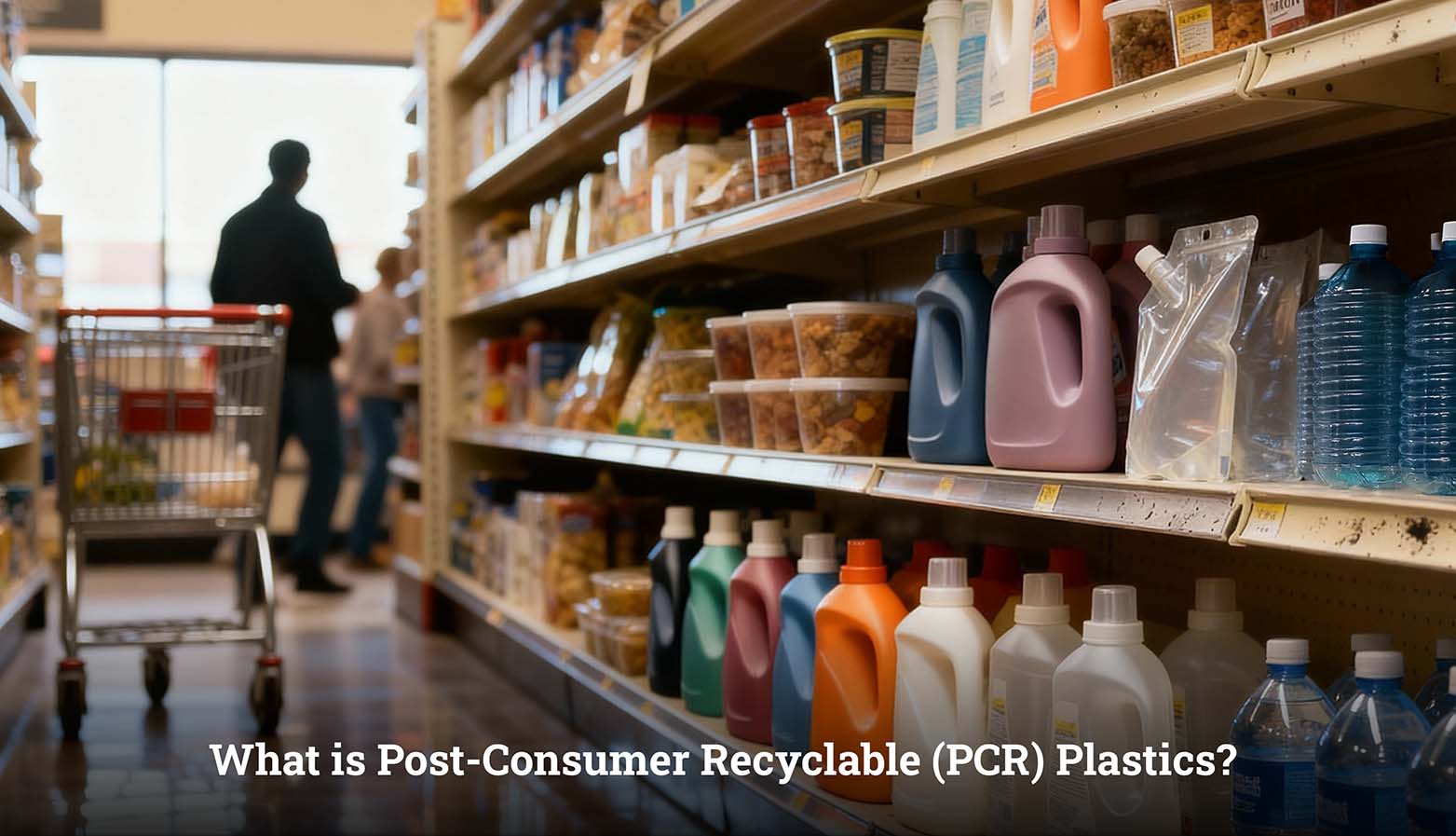
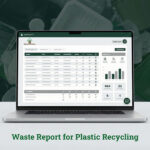 What Is Waste Reporting and Why Does It Matter in Plastic Recycling?
What Is Waste Reporting and Why Does It Matter in Plastic Recycling?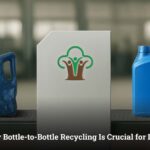 What Is Bottle-to-Bottle Recycling? Why It Matters for India
What Is Bottle-to-Bottle Recycling? Why It Matters for India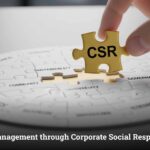 The Role of CSR (Corporate Social Responsibility) in Waste Management
The Role of CSR (Corporate Social Responsibility) in Waste Management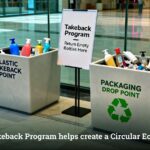 What is Takeback Program & Their Role in Building a Circular Economy
What is Takeback Program & Their Role in Building a Circular Economy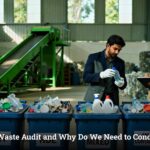 What Is a Waste Audit and Why Should Recycling Companies Conduct One?
What Is a Waste Audit and Why Should Recycling Companies Conduct One?